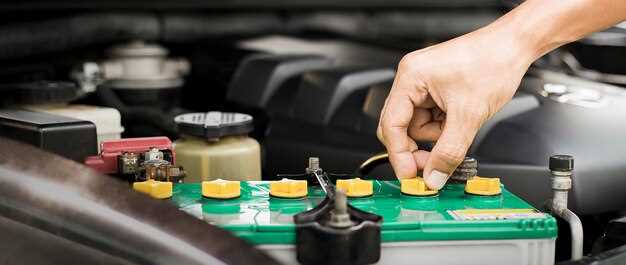
Replacing your car’s battery is an essential maintenance task that every vehicle owner should be prepared for. A reliable battery not only ensures your vehicle starts smoothly but also powers various electrical systems, from headlights to air conditioning. Knowing when and how to replace your battery can save you time, money, and stress in the long run.
In this guide, we will provide you with practical steps and safety precautions for carrying out a battery replacement safely and effectively. Whether you’re a seasoned DIY enthusiast or a first-time car owner, understanding the intricacies of battery replacement will empower you to tackle this task with confidence.
Alongside step-by-step instructions, we will also discuss the tools you need, signs that your battery may need replacement, and tips on choosing the right battery for your vehicle. By following this guide, you will ensure a seamless replacement process while emphasizing safety and efficiency.
Choosing the Right Battery for Your Vehicle
Selecting the appropriate battery for your car is essential for optimal performance and longevity. Different vehicles require specific types of batteries based on their electrical systems and engine specifications. Start by checking your owner’s manual or the battery specifications label located on your current battery for crucial details such as group size, type, and cold cranking amps (CCA).
Group size refers to the dimensions of the battery and is important for ensuring a proper fit in your vehicle’s battery tray. It also affects the battery’s terminal placements, which must match your car’s configuration. If unsure, consult with a knowledgeable retailer or mechanic to ensure compatibility.
The type of battery is another critical factor. There are several options, including lead-acid, AGM (Absorbent Glass Mat), and enhanced flooded batteries. Lead-acid batteries are the most common and typically more affordable, while AGM batteries offer better performance in cold weather and are more resistant to vibration, making them ideal for higher-end or performance vehicles.
Additionally, consider the cold cranking amps (CCA), which indicate the battery’s ability to start an engine in low temperatures. A higher CCA rating is necessary for vehicles in colder climates. The reserve capacity (RC) of the battery is also important, as it determines how long your car can run on battery power alone, which is crucial in case of a charging system failure.
Finally, look for reliable brands and check for warranties. A reputable manufacturer often indicates quality and assurance, providing peace of mind regarding the performance and durability of your replacement battery.
Step-by-Step Instructions for Battery Removal and Installation

Before starting the battery removal process, ensure you have the necessary tools: a wrench or socket set, safety gloves, and goggles. Make sure the car is turned off, and the keys are removed from the ignition.
1. Open the hood of your car and secure it with the prop rod. Locate the battery; it is typically found in the engine compartment, though some models may have it in the trunk.
2. Identify the battery terminals. The positive terminal is marked with a “+” sign and usually colored red, while the negative terminal has a “-” sign and is commonly black.
3. Use your wrench to loosen the nut on the negative terminal first. Once it’s loose, carefully disconnect the negative cable and move it away from the battery to prevent accidental contact.
4. Repeat the process for the positive terminal. Loosen the nut, disconnect the cable, and ensure it is also moved aside.
5. If your battery is secured by a clamp or bracket, use your wrench to remove it. This may involve loosening screws or bolts that hold the battery in place.
6. Carefully lift the battery out of its compartment. Batteries can be heavy, so use both hands and maintain a stable posture to avoid injury.
7. To install the new battery, place it in the same position as the old one. Ensure the terminals are oriented correctly–positive to positive and negative to negative.
8. Reattach the battery bracket or clamp, securing the battery in its place to prevent movement.
9. Start by connecting the positive terminal first. Place the cable on the terminal and tighten the nut, ensuring a snug fit.
10. Next, connect the negative terminal and similarly tighten its nut.
11. Double-check that both terminals are secure. Also, ensure there are no tools or other items left in the engine compartment.
12. Close the hood of your car and dispose of the old battery properly at a recycling center or return it to the place of purchase.
After completing these steps, your car should be ready to start with the new battery installed, providing reliable power for your vehicle’s electrical systems.
Safety Precautions to Follow During Battery Replacement

Replacing your car battery can be a straightforward process, but safety should always come first. Here are some essential precautions to ensure a safe replacement.
Before starting, make sure you are working in a well-ventilated area to avoid inhaling any harmful gases that may be emitted from the battery. Additionally, it is advisable to wear safety goggles and gloves to protect your eyes and skin from potential acid spills.
Disconnect the battery starting with the negative terminal first to prevent any short circuits. Use a wrench to loosen the terminal clamps, and avoid using metal tools that could accidentally bridge the terminals. Ensure that you do not touch both terminals with the tool simultaneously.
Always check the condition of the battery. If there are signs of swelling or leakage, handle it with extreme caution and consider seeking professional help. Never attempt to charge a damaged battery, as this could lead to an explosion or harmful chemical release.
When lifting the battery, ensure proper posture and use both hands to reduce the risk of dropping it. Car batteries are heavy and can cause injury if mishandled. If possible, seek assistance when removing or installing the battery to make the process safer.
Once the new battery is in place, reconnect the terminals starting with the positive terminal followed by the negative one. This order helps prevent any electrical shorts. After installation, double-check that both terminals are tightly secured and free from corrosion.
Finally, dispose of the old battery properly by taking it to a recycling center or an automotive shop that accepts used batteries. This helps prevent environmental contamination and promotes safety for both individuals and the community.




